Thursday, June 13, 2024
Courir de Mardi Gras: A Photo Essay
Every Mardi Gras, a blur of costumed Cajun and Creole revellers in Louisiana head off in search of gumbo ingredients. When an ingredient is offered, such as a live chicken, the race is on. David Simpson has been documenting this unique tradition for over 25 years, with a new book capturing the centuries-old celebrations
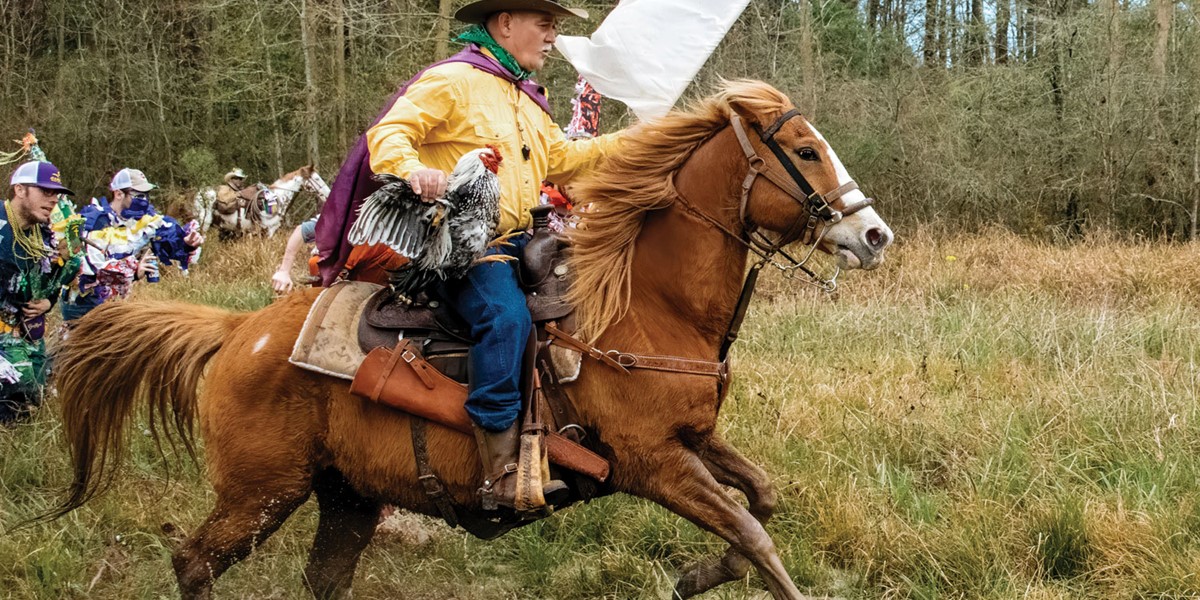
In 1997 on Mardi Gras day, I happened to be jogging about 9am near my home when I encountered the courir [French for ‘to run’] on its way out of town. A few of the Mardi Gras [participants in a courir are referred to as ‘Mardi Gras’] made fun of me. I can’t recall any details, but I thought one jibe was pretty clever. When I got back home, I grabbed my camera and hurried to catch up with the courir.
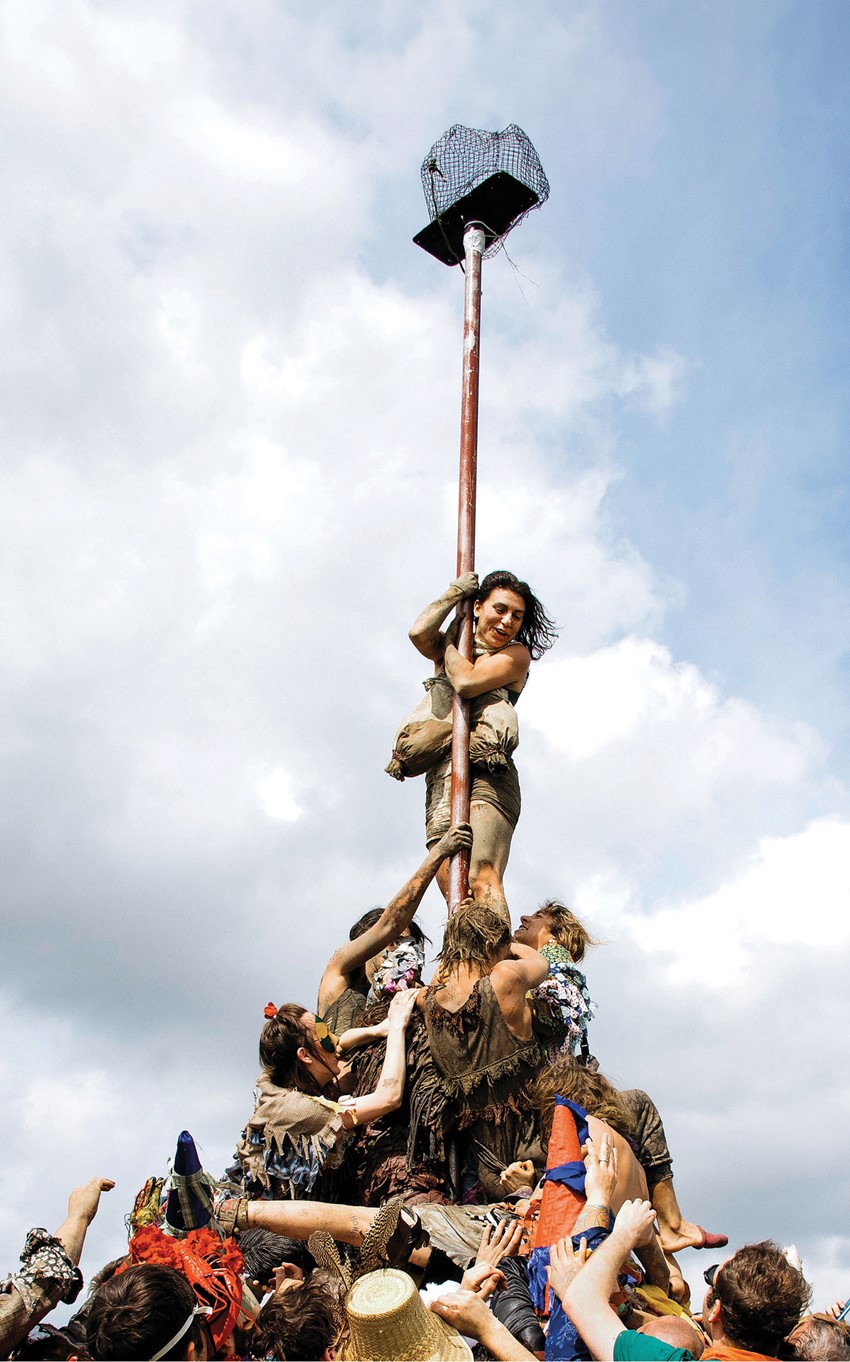
Once I had encountered the brightly costumed Mardi Gras dancing, begging, cutting up and really letting loose, heard the medieval sounding strains of ‘La Chanson de Mardi Gras’ played by musicians riding in a wagon, and watched my first chicken chase, I was hooked.”
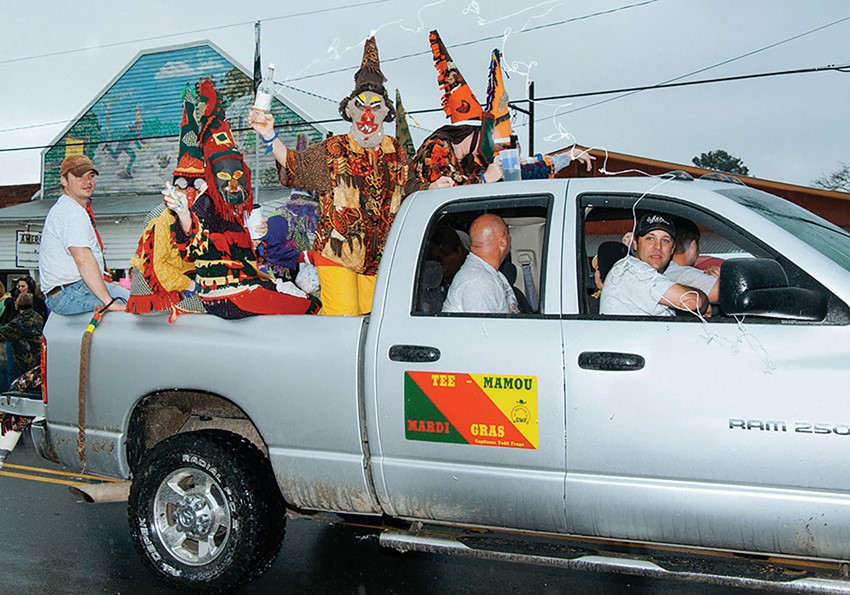
So recalls David Simpson of his entry into the Mardi Gras traditions of Acadiana, the southern region of Louisiana known as Cajun Country. Simpson grew up in Baton Rouge but moved to Eunice in Acadiana to work as an English teacher.
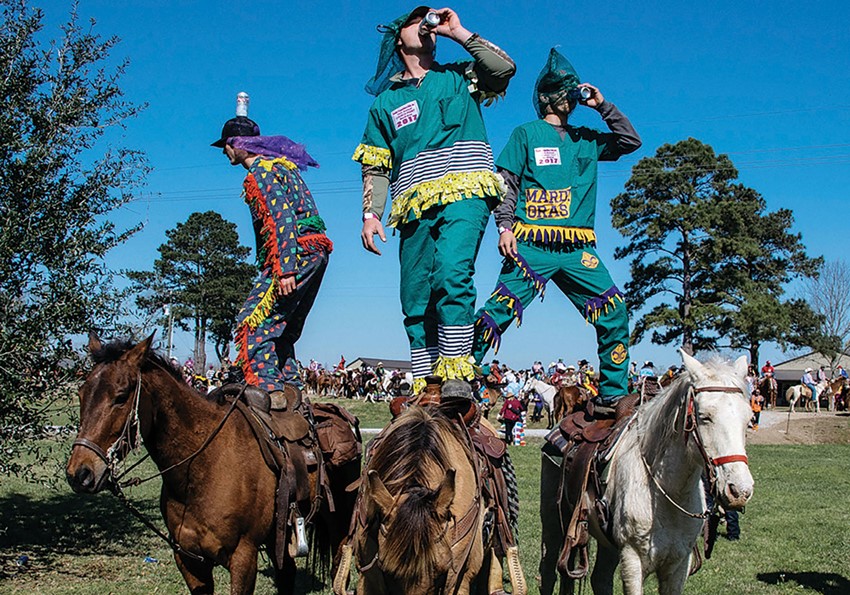
As a side project at work he began documenting the local culture on a university web page. Witnessing his first courir in 1996, by 1997 he was engrossed. His photograph book documenting the event, Courir, contains images taken between 1999 and 2023.
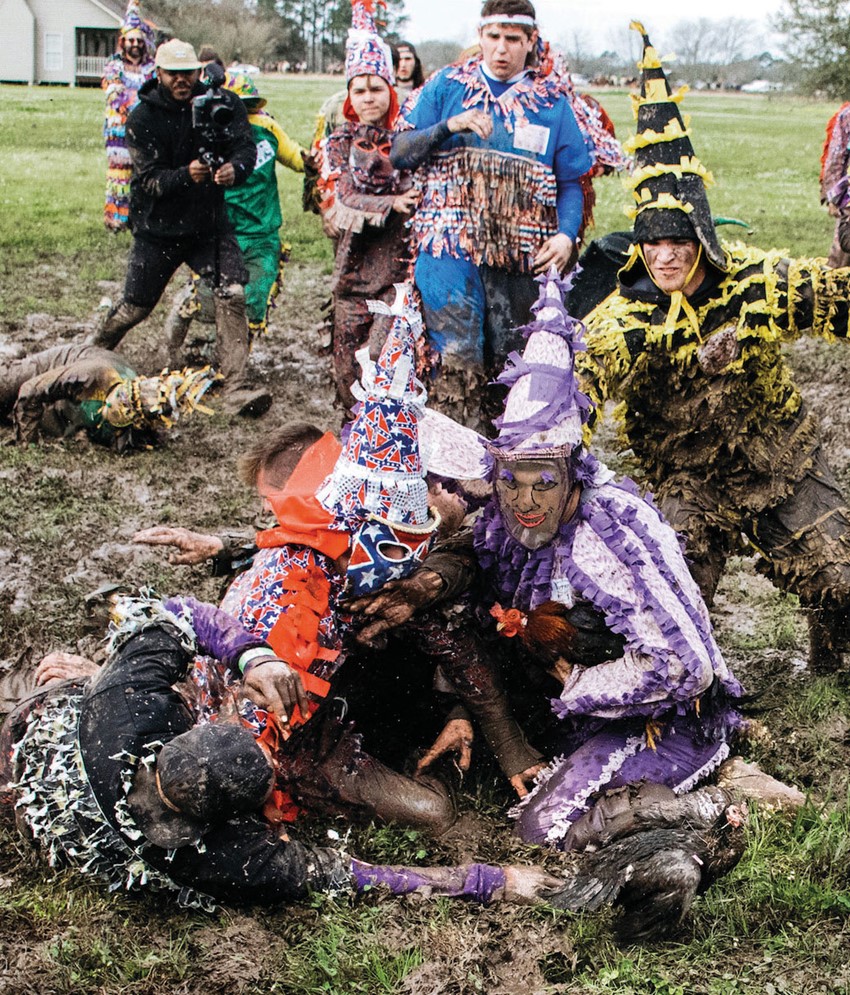
Describing the tradition within its pages, he writes: ‘The courir are led by a capitaine who, when they arrive at a farm house or other pre-arranged stop, obtains permission to enter private property, after which the Mardi Gras charge toward the front of the house, where they sing, dance and beg until the owner provides them with an ingredient for a gumbo [which] is offered to the Mardi Gras at the end of the run. Frequently, homeowners throw a live chicken in the air for the Mardi Gras to chase, converging together like football players competing to try to recover a fumble. The Mardi Gras wear costumes that conceal their identities and that also follow a very old tradition of mocking the roles of those in authority.’
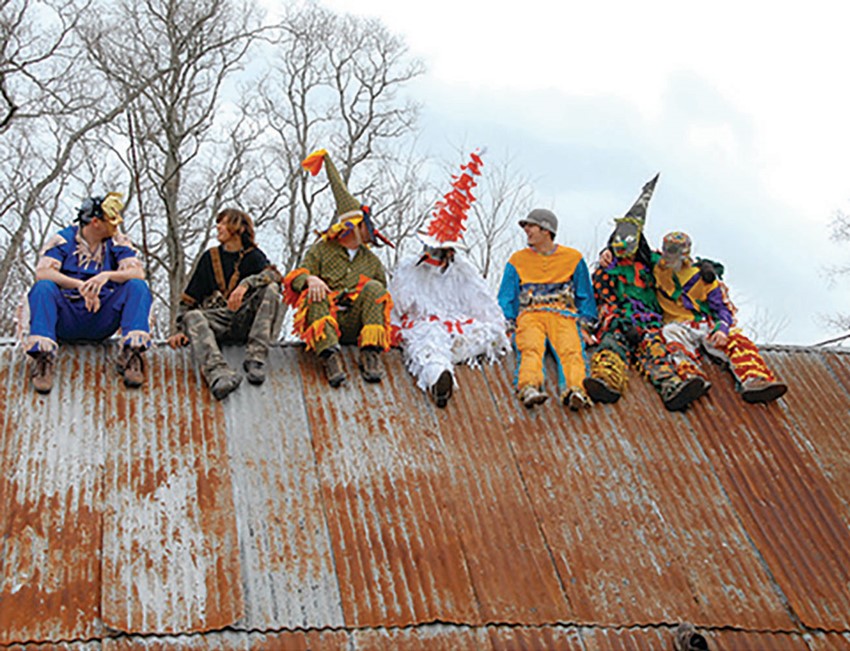
Courir is published by FLEE Project
This article originally appeared in the July 2024 issue of Songlines. Never miss an issue – subscribe today

